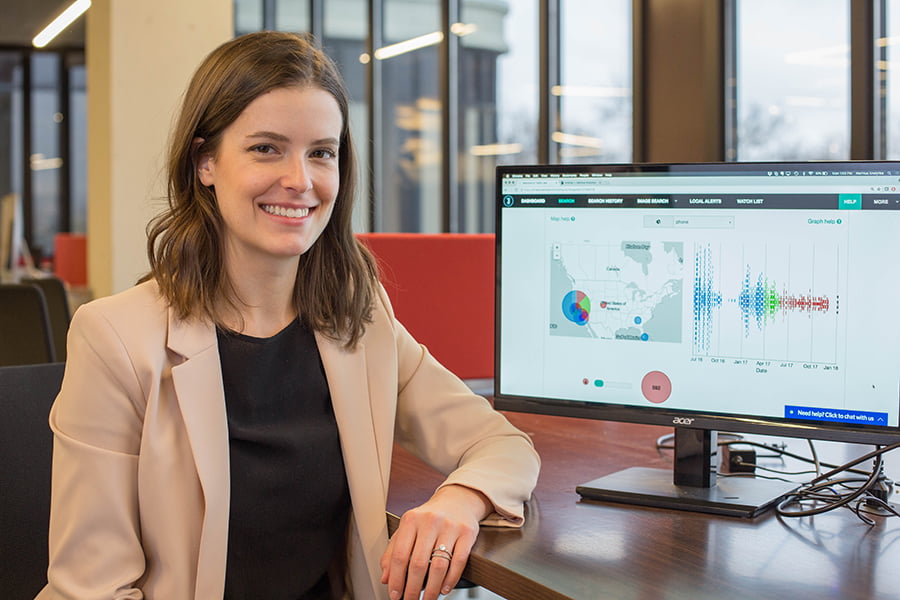When Emily Kennedy was 16, she was on a trip to Eastern Europe and that’s when she encountered the ugly truth of child trafficking. She became interested in this and wanted to help fight the crime. She started learning more about the crime. Eventually, she became the founder and chief executive of startup Marinus Analytics.

According to the International Labour Organization’s figures, an estimated 40.3 million people were forced into a modern form of slavery—including forced labor and sexual exploitation—in 2016, meaning there are 5.4 victims for every 1,000 people in the world. One in four victims was a child.
Missing, runaway, and foster children the most vulnerable who are exposed to this crime.
The rise of sites like Craigslist in 1995 and Backpage.com in 2004 made it easy for traffickers to advertise online. Kennedy said traffickers want to control, so when they worked with victims on the street, they usually hung around nearby, were in more potential danger themselves and couldn’t remain as anonymous. The internet, however, makes it much harder to tie any illegal activity back to the perpetrator.
ALSO READ: Algorithm tool to quickly catch sex predators developed
But it is important to note that just like technology has worsened the problem, it has also helped in finding out the solution to this crime.
How does the startup work?
Kennedy started developing Marinus’ Traffic Jam when she was a student at Carnegie Mellon University. It’s a combination of AI tools, including facial recognition, that came out in 2013 and helps identify victims. It now has a database of over 210 million ads.
“Every day, tens and even hundreds of thousands of escort ads are posted online,”
Kennedy said.
“We scrape the top escort sites and put them into Traffic Jam to make them searchable. The goal is to take all of the massive amounts of data on the internet that’s relevant and turn it into actionable intelligence,”
she explained.
That data includes phone numbers, locations and now photos after Marinus added a feature called FaceSearch in 2017. This allows detectives to start with a photo of a missing child to determine whether a potential victim has been advertised online.

Detectives previously relied on phone numbers to track victims via Google searches, but traffickers use burner phones and get new numbers frequently, making such searches more challenging.
Kennedy pointed out that this is an extremely slow and tough manual process that would not for most cases show all of the ads.
“One, because of human error, but also because traffickers delete old ads, so they are not on Google and can’t be found,”
she said.
But Traffic Jam crawls sites every 20 minutes, meaning it captures almost all the ads and puts them into a database.
Law enforcement can also use Intel from Traffic Jam to conduct rescues much faster. It can reduce investigation time by 50 percent, which can work out to days or even weeks. Sites, where ads appear, are also a moving target.
Recently, Facebook hosted its third child-safety hackathon in which nearly 100 engineers and data scientists reportedly from companies like Uber, Twitter, Google, Microsoft, and Pinterest worked on projects to help combat child sex trafficking. All code and prototypes were donated to partners NCMEC, Thorn, the Internet Watch Foundation, Stop the Traffik, A21, and Polaris.
Marinus works with local, state and federal law enforcement in the U.S. and Canada as well as some nonprofits, including the NCMEC and the DeliverFund. It has also worked with prosecutors and attorneys general and said she’d love to work with financial groups.
“We have all this data, and we’re able to now work with agencies to see overlap between online [ads] and the wire transfers of the proceeds of human trafficking …helping tie sex trafficking to other cases,”
Kennedy said. She rightfully pointed out that these cases are not isolated in nature, they are often connected to other crimes.









